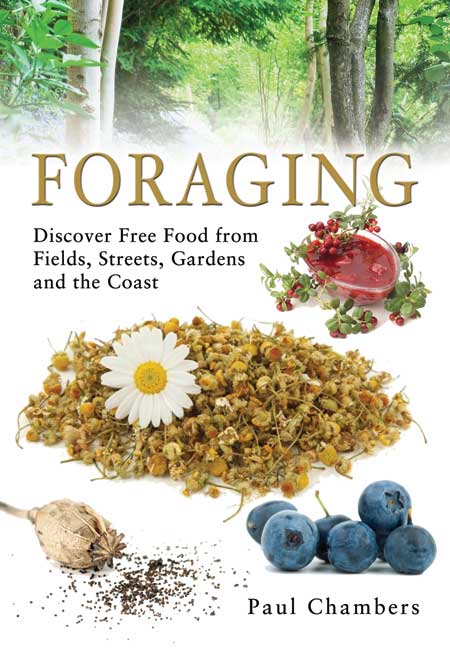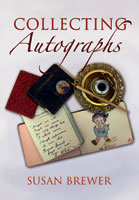Foraging (ePub)
Discover Free Food from Fields, Streets, Gardens and the Coast
File Size: 23.2 MB (.epub)
Pages: 208
ISBN: 9781844689835
Published: 18th April 2011
Forager and naturalist Paul Chambers explores the coast, fields, streets and gardens to reveal over a hundred of Britain's most exciting edible plants, flowers and seaweeds. This must buy pocket guide uniquely blends the practical skills of foraging with the best elements of natural history writing. As well as recipes, identification tips and collecting advice, you will also learn about the historical, cultural and medicinal uses for each plant as well as its ecological significance. Much of this information is based on Paul's own research and experience and will not be found in any comparable books. With chapters that cover all parts of the British countryside, including urban environments and the seashore, FORAGING offers a comprehensive guide that will suit beginners and experienced foragers as well as those with a general interest in the natural and cultural history of edible plants. Highly illustrated and expertly written, this invaluable guide also includes a seasonal calendar and a handy A-Z of edible plants.
Beautifully written and well laid-out, I look forward to putting it to practical use, no higher recommendation can I give it!
Destructive Music
A useful and practical field guide to what the author considers is “a fun and practical hobby that is ideally suited to the modern world”.
The Countryman, June 2012
Nature is God’s garden, and so what better place to start your foraging adventures? Edible plants can be found in hedgerows, woodland and parks. Author Paul Chambers’ wealth of wisdom will give you the knowledge to put foraging into practice!
Inspired Times Magazine, Issue 12, Spring 2012
Foraging by Dr Paul Chambers reveals more than 100 of Britain;s most exciting and accessible edible plants and seaweeds, complete with plant identification tips.
Garden News, 7th June 2011
Like most home growers, the idea of free food is appealing as well. There’s quite a few things in our hedgerows and woods that are actually edible and in some cases pleasurable to eat. Just because you can eat something, doesn’t mean you’ll actually want to!
www.allotment.org.uk
I recently picked up a copy of Foraging by Paul Chambers. As the name suggests, it’s about the foods available in the wild. It’s actually very good, I had the horrible feeling it might be a ‘bandwagon’ book but far from it.
The author is no dummy, he’s got an MSc and a PhD in micropaleontology. I’d want a GCSE for just spelling that. He’s also an accomplished naturalist with a passion for our countryside. So it’s a well written and organised book.
More importantly, it’s readable. It is a reference book but it’s actually interesting to read even when you’re not looking for something specific. One thing I loved was how he’s organised the plants you might find by habitat. Garden & Urban, Hedgerows & Meadows, Woodlands & Forests, Grasslands & Heath etc. So you can read what’s most relevant to you or to where you are going if you’re planning a trip. There’s also a seasonal calendar and an A-Z listing, all of which help no end. You can easily see what is available in a specific area during a season at a glance.
He quotes a lot of old sayings, some are very interesting. Mind you, the one on nettles didn’t impress my shepherd friend much “A sick sheep must be forced to eat nettles; and when it has so done, the shepherd should piss into its mouth.” Please excuse the olde English vernacular – it was William Ellis who said it in 1749 apparently.
There are clear colour pictures throughout, which are helpful in identification rather than window dressing. Anyway, if you’re into the idea of wild foods and foraging, you could do a lot worse than invest in this book.
I have a glorious crop of mushrooms beneath my Maple tree right now. Beautiful to look at, and I'm particularly fond of mushrooms, although I've never seen any quite like this in the supermarket - light orangey colour and with a cracked top skin. Hmm, best not to chance it, maybe? This excellent little book reveals what you can and can't eat, where to find what you can eat, and what to do with it once you've harvested it. The trouble is, not many people have access to such provender - but the business of foraging is catching on, and this lovely book can only help to promote it.
Books Monthly: June
In a time of recession it makes perfect sense to hunt for free food .It certainly bolsters a growing family food cupboard and the taste of these foods could be described as, 'food of the god's.' If you have tasted hazelnuts picked fresh from the hazel tree you can taste the breeze in the trees and the earthiness of the woodlands in an explosion of pleasurable culinary excellence. This book has invaluable photographic evidence of the plants to be gathered and this is entirely necessary for good identification. Forager and naturalist Dr Paul Chambers explores the coast, fields, streets and gardens revealing over 100 of Britain's most exciting edible plants, flowers and seaweeds. This book is essential for everyone in the pursuit of a healthy life enhancing diet as many plants and fruits contain powerful nutrients and compounds beneficial to the body. Folklore and hunter gathering has been going on for thousands of years and this book educates us in this beautiful voyage of food discovery. Many chefs are now incorporating these wild foods into their culinary perfection e.g. samphire, wild strawberry and the delightful bilberry. The book also highlights the actual pleasure of locating these fruits and plants in nature and the yearly seasonal diary that has to be closely adhered to in order to obtain them at their optimum best. It is also a wonderful book to show you how to produce wonderful liqueurs like blackberry brandy and sloe gin to delight your dinner guests.
Susan (Customer Review)
Invest in this book and you will have endless hours of foraging fun and will realize what a wonderful hobby it can be. There is something really satisfying about picking wild apples or wild quince and making a delicious hot crumble served up with fresh cream or cold ice cream. Free Food Wonderful!
We live in an age where supermarkets rule, and if you would like to purchase some food you automatically think of your nearest supermarket. However, unknown to many. Britain has hundreds upon hundreds of natural edible plants, flowers and seaweeds that you can consume without having to spend a single penny! This book provides detailed recipes, photographs and historical significance on each of these interesting plants as well as explaining the cultural and medicinal uses that they provide. Through years of personal experience and research, author and media consult pours his passion and enthusiasm on this subject into this intriguing and informative read that might just make you think again about shopping for all your food at the supermarket, as there is a whole culinary world on your doorstep waiting to be discovered!
Kate (Customer Review)















